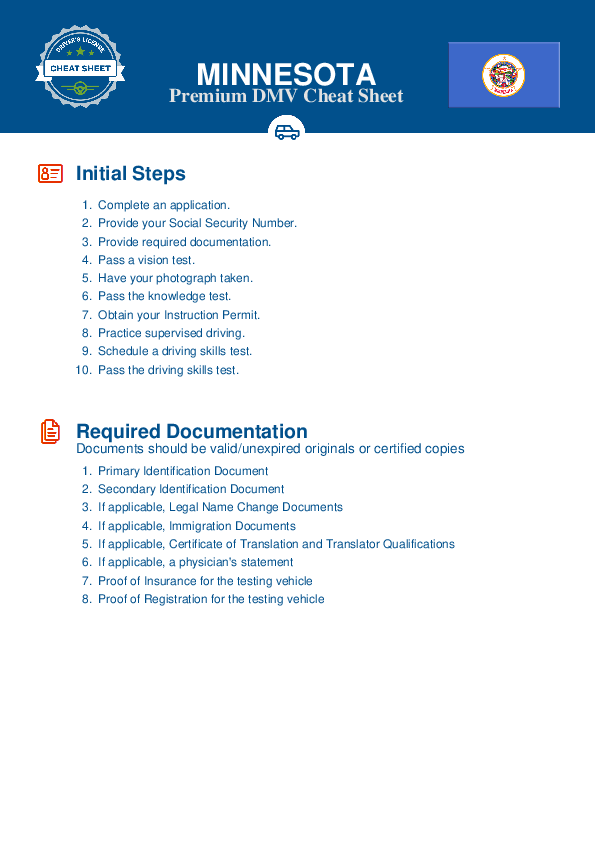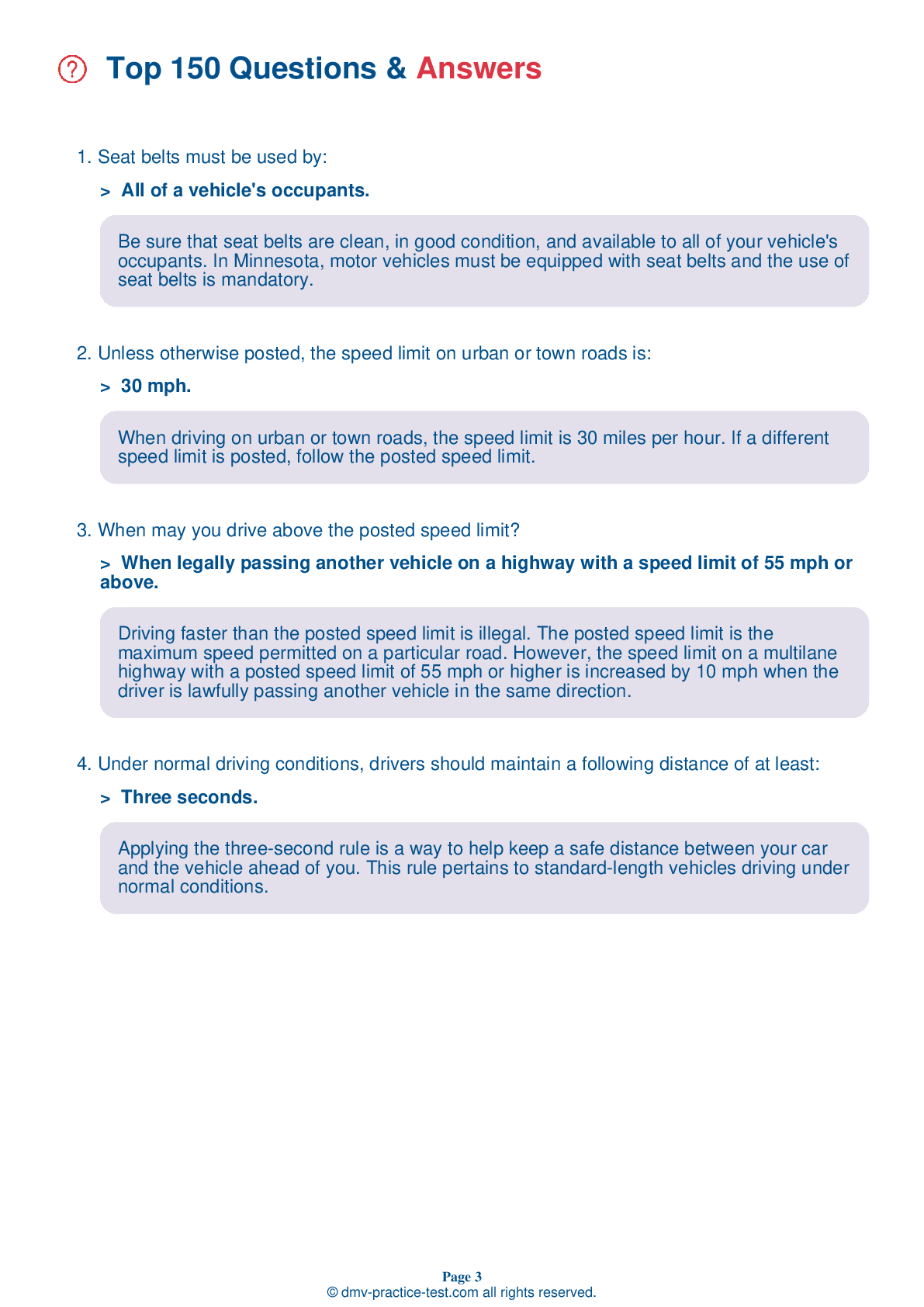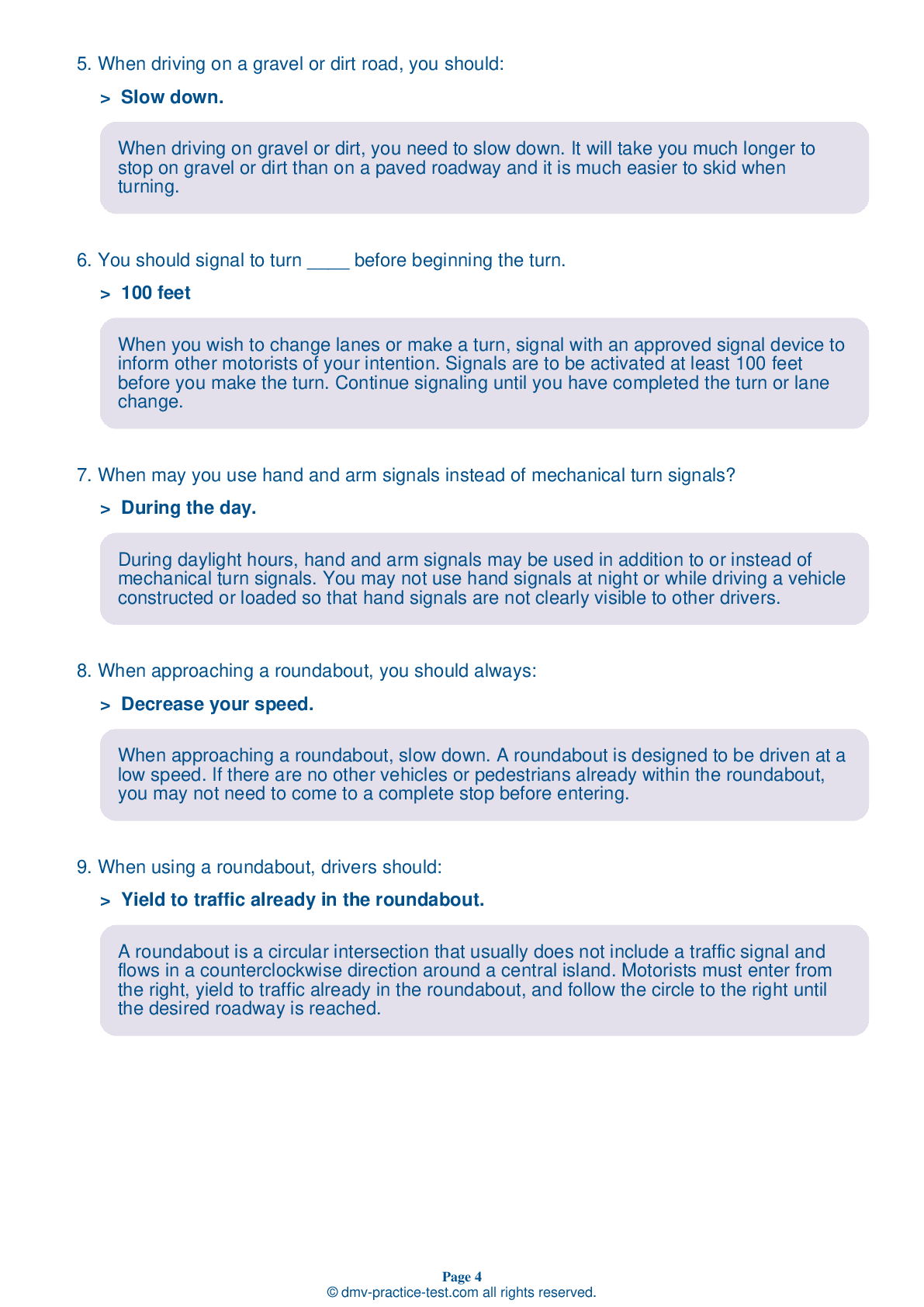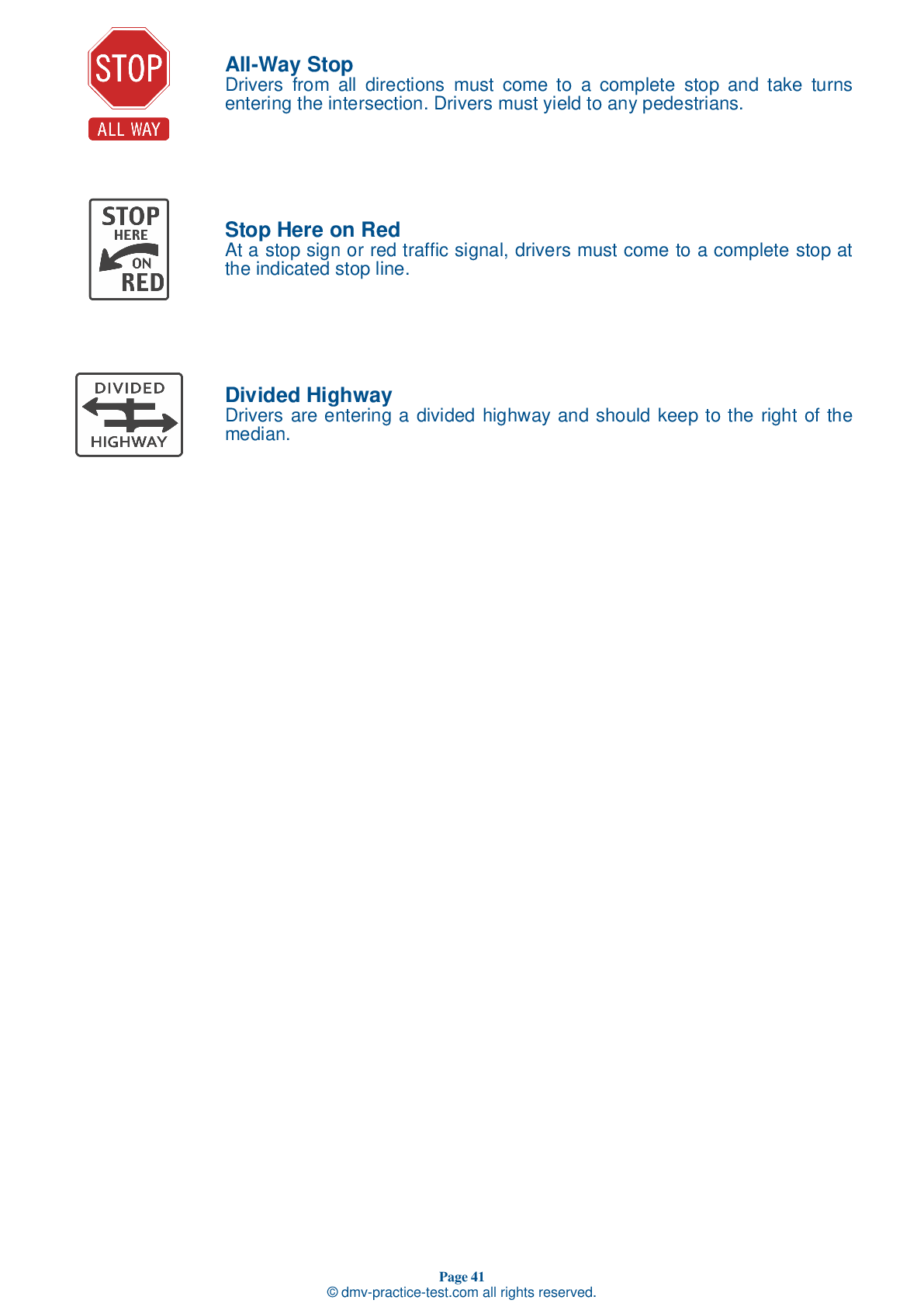FREE Minnesota DMV Practice Test #20 Page 5 of 5
The Minnesota DMV practise examinations have been updated for January 2025. It includes questions based on the Minnesota Driver Handbook's most essential traffic signals and laws for 2025. Use actual questions that are very similar (often identical!) to the DMV driving permit test and driver's licence exam to study for the DMV driving permit test and driver's licence exam.
On the practise exam, each question gets a tip and explanation to help you remember the concepts. The written component of the official Minnesota DMV test will include questions about traffic rules, traffic signs, and driving statutes, as well as knowledge from the Driver Handbook.
To obtain a passing grade, you must correctly answer 32 of the 40 questions. To help you prepare for your instruction permit or driver's licence, take our Minnesota DMV practise test.
The DMV exam is available in several languages.
Using any kind of testing assistance will result in an automatic fail, and the DMV may take additional action against your driver's licence, so stay away from it.
33 . You are waiting in the intersection to complete a left turn. You should:
You must always signal before turning or changing lanes. You should keep your wheels straight while waiting to make a left turn. If another vehicle hits you from behind, this ensures that you will not be pushed into oncoming traffic.
34 . Seat belts must be used by:
Be sure that seat belts are clean, in good condition, and available to all of your vehicle's occupants. In Minnesota, motor vehicles must be equipped with seat belts and the use of seat belts is mandatory.
35 . At a four-way stop:
At four-way stops, traffic from all four directions must stop. The first vehicle to reach the intersection should move forward first. If two vehicles reach the intersection at the same time, the driver on the left yields to the driver on the right.
36 . A regulatory sign containing a red circle with a slash through the middle indicates:
Some regulatory signs prohibit certain actions. These signs are rectangular and white with red and black markings. A red circle and slash on top of a black symbol indicates that the specified action is forbidden.
37 . It is important to slow down:
You should always slow down when driving on narrow or winding roads, near intersections, near railroad crossings, on hills, in sharp or blind curves, where there are pedestrians or driving hazards, and when the roads are wet or slippery.
38 . If you are driving on a one-way street and an emergency vehicle using its flashing lights approaches your vehicle, you must:
If an emergency vehicle using its lights or siren approaches while you are driving on a one-way street, you must drive toward the nearest roadside and stop.
39 . Pedestrians in crosswalks and at intersections always have the right-of-way.
Pedestrians have the right-of-way when crossing the road at an intersection. A crosswalk exists anywhere that two streets intersect, whether the crosswalk is marked or unmarked.
40 . Driving at night requires increased caution because:
Because it is dark, drivers cannot see as well at night as they can during the day. From one half hour after sunset until one half hour before sunrise, or at any other time when persons or vehicles are not visible for 500 feet, drivers must use their headlights.
See the exact questions that will be on the 2025 Minnesota DMV exam.
99.2% of people who use the cheat sheet pass the FIRST TIME
LT gives us an insight on how the cheat sheet provided her with all the study questions she needed before taking her test.
Joe initially studied with the handbook and failed his test, he eventually found us online, studied and pass his test the first time around.



